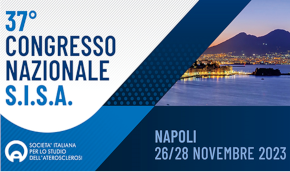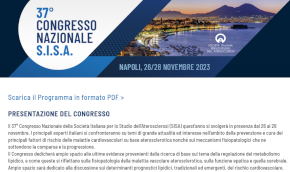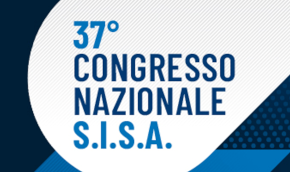 Rivista in lingua italiana
Rivista in lingua italiana
riservata ai Soci SISA
Ultimo numero:
Anno 14 • N.4/2023
SISANews
Ace inibitori e sartani. Un'associazione rischiosa
Dopo ONTARGET (Ramipril+Telmisartan), anche la Fried ed i suoi collaboratori si sono dovuti arrendere all'evidenza che associare inibitori dell'enzima di conversione e antagonisti del recettore dell'angiotensina non porta a nulla di buono. Lo studio, che era stato intrapreso su pazienti diabetici moderatamente nefropatici per verificare se l'associazione terapeutica potesse avere un impatto positivo sull'evoluzione della nefropatia diabetica, è stato prematuramente interrotto per l'eccesso di effetti collaterali e per l'assenza di un'azione significativa sulla progressione verso l'insufficienza renale e sulla mortalità. Sembra proprio che il blocco pressoché totale del sistema renina-angiotensina non sia scevro da rischi e, comunque clinicamente inefficace. Lo dimostrano anche i risultati negativi di un altro studio recente, ALTITUDE, condotto con la combinazione di un sartano con aliskiren che, interferisce sempre con la via dell'angiotensina, seppure con un meccanismo diverso (inibizione della renina) da quello degli ACE inibitori.
![]()
Combined angiotensin inhibition for the treatment of diabetic nephropathy
Fried LF, Emanuele N, Zhang JH, Brophy M, Conner TA, Duckworth W, Leehey DJ, McCullough PA, O'Connor T, Palevsky PM, Reilly RF, Seliger SL, Warren SR, Watnick S, Peduzzi P, Guarino P
N Engl J Med 2013;369:1892-903
BACKGROUND: Combination therapy with angiotensin-converting-enzyme (ACE) inhibitors and angiotensin-receptor blockers (ARBs) decreases proteinuria; however, its safety and effect on the progression of kidney disease are uncertain. Methods We provided losartan (at a dose of 100 mg per day) to patients with type 2 diabetes, a urinary albumin-to-creatinine ratio (with albumin measured in milligrams and creatinine measured in grams) of at least 300, and an estimated glomerular filtration rate (GFR) of 30.0 to 89.9 ml per minute per 1.73 m(2) of body-surface area and then randomly assigned them to receive lisinopril (at a dose of 10 to 40 mg per day) or placebo. The primary end point was the first occurrence of a change in the estimated GFR (a decline of = 30 ml per minute per 1.73 m(2) if the initial estimated GFR was = 60 ml per minute per 1.73 m(2) or a decline of = 50% if the initial estimated GFR was <60 ml per minute per 1.73 m(2)), end-stage renal disease (ESRD), or death. The secondary renal end point was the first occurrence of a decline in the estimated GFR or ESRD. Safety outcomes included mortality, hyperkalemia, and acute kidney injury. Results The study was stopped early owing to safety concerns. Among 1448 randomly assigned patients with a median follow-up of 2.2 years, there were 152 primary end-point events in the monotherapy group and 132 in the combination-therapy group (hazard ratio with combination therapy, 0.88; 95% confidence interval [CI], 0.70 to 1.12; P=0.30). A trend toward a benefit from combination therapy with respect to the secondary end point (hazard ratio, 0.78; 95% CI, 0.58 to 1.05; P=0.10) decreased with time (P=0.02 for nonproportionality). There was no benefit with respect to mortality (hazard ratio for death, 1.04; 95% CI, 0.73 to 1.49; P=0.75) or cardiovascular events. Combination therapy increased the risk of hyperkalemia (6.3 events per 100 person-years, vs. 2.6 events per 100 person-years with monotherapy; P<0.001) and acute kidney injury (12.2 vs. 6.7 events per 100 person-years, P<0.001). Conclusions: Combination therapy with an ACE inhibitor and an ARB was associated with an increased risk of adverse events among patients with diabetic nephropathy.
N Engl J Med 2013;369:1892-903

Area Soci
Eventi



 SISA LIPID ACADEMY - Corso avanzato di lipidologia clinica
SISA LIPID ACADEMY - Corso avanzato di lipidologia clinicaModena, 22-23 Giugno 2023
[continua a leggere]Giornale Italiano Arteriosclerosi
HoFH today
 Rivista Italiana della
Rivista Italiana della
Ipercolesterolemia
Familiare Omozigote
Anno 5 • N.1/2023
Rivista NMCD
Diateca
[continua a leggere]
[continua a leggere]
Newsletter
il vostro indirizzo di posta elettronica
Progetto LIPIGEN

Nuovo sito dedicato al Progetto LIPIGEN
Progetto LIPIGEN - Vecchio portale
E' necessario essere loggati come utente
Lipigen per poter accedere alla pagina
PROject Statin Intolerance SISA
PROSISA – PROject Statin Intolerance SISA
E' necessario essere loggati come utente
PROSISA per poter accedere alla pagina
GILA - Lipoprotein Aferesi
Gruppo Interdisciplinare Lipoprotein Aferesi
(Accesso Gruppo GILA-Lipoprotein Aferesi)
E' necessario essere loggati come utente del Gruppo GILA per poter accedere
Gruppo Interdisciplinare Lipoprotein Aferesi
(Documentazione ad accesso libero)
Pagina informativa per medici e pazienti








